Learning how to sing lower is essential for any singer.
Most people focus on increasing their range by singing higher with more power (which is a wonderful thing…), but to become an amazing singer you need to have amazing control with your entire vocal range.
That’s why in this comprehensive guide we are going to go step-by-step on how you can increase the power and control for beginners in your lower range.
Plus, we go over exercises advanced singers can use to control their vocal runs and vibrato in their lower range.
So let’s get started.
______
Can Anyone Learn To Sing Lower?

Yes, anyone can learn to sing lower as long as you haven’t reached your genetic limit.
The best way to think about your voice is a guitar string: in order to hit the lower notes, your vocal cords have to be thicker and vibrate slower.
And vice versa where the thinner the cords and the faster they vibrate, the higher the sound.
But there’s a tiny problem: You can only play so low on the guitar.
Sure, you can loosen the cord to drop a couple keys down, but at one point, you are going to reach a limit.
But the good news is that if you haven’t been focusing on strengthening your lower range, then chances are you aren’t even close to reaching your genetic limit.
Most people neglect training their lower range and focus solely on their upper range and power, which is nice and dandy, up until you have to sing a song that requires lower notes.
And then suddenly when you try to hit those notes it is:
- Weak…
- Crackly…
- And doesn’t sound good…
That’s why we are going to go step by step in training your lower range so that you can sing confidently when you approach those really low notes.
______
1. Find Your Vocal Range

The first step in learning how to sing lower than your current range is to measure exactly where your vocal range is.
I recommend taking 5-10 minutes to warm up your voice before attempting to find it in both your lower and upper range.
Here’s how to find your vocal range: go to a pitch finder tool and sing as low and high as you can like below…
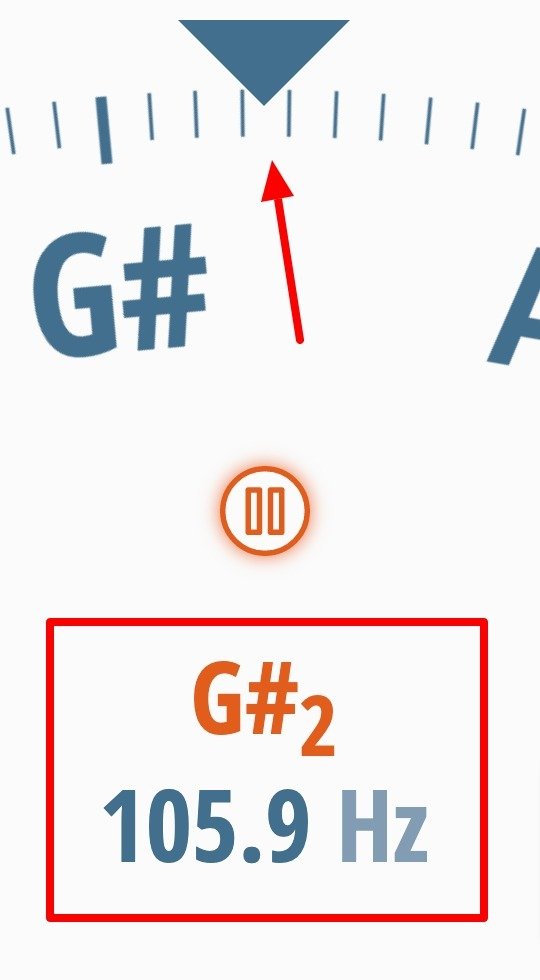
As you can see, the lowest note I can hit is a G#2 (and I’m slightly sharp…)
It’s important to measure where your vocal range is to track your progress when you are working on your lower range.
There’s two things that you want to note when you are trying to determine your lowest range:
- The maximum low note you can physically sing…
- And the lowest note you can sing well…
You are going to notice that when you sing your lowest note, you probably will not have much power or control behind it.
That’s why it’s also important to see the lowest note where you still have power and a good amount of control to also measure your progress.
Although everyone has a genetic limit to how low their voice can be, that doesn’t mean you can’t strengthen your lower voice.
Vocal range doesn’t determine everything. There’s also things like:
- Vocal dynamics…
- Vocal runs…
- And most importantly, sounding great.
So don’t worry too much about increasing your range in the beginning and just focus on strengthening your lower range. The range will come naturally.
So now that you found your vocal range, it’s time to learn how to sing in our lower range with control.
______
2. Find A Song to Imitate

The best way to learn how to sing lower well is to imitate someone who sings well in their lower voice.
The reason this works is because when we focus on trying to copy a singer who already sings well in their lower range, we mimic their tone and power without even realizing it.
That’s why for this example I’m going to go with “Exile” by Taylor Swift And Bon Ivor below…
If you listened to the first line, you can see how deep his voice can get.
So you have two choices to work on your lower voice:
- Find a song that’s near the limits of your lower range…
- Find your favorite song and keep dropping the key until it’s near your lower range…
I prefer option 1 if you are a complete beginner because listening to a song that’s multiple keys down will sound a bit distorted, making it harder for you to find the pitch.
But either method works.
______
3. Start Learning To Sing On Pitch

Now that you have found a song, the next step is learning to sing lower but on pitch.
Learning how to sing on pitch is crucial for any singer, whether you are reaching high or low notes.
The easiest way to sing on pitch: Go to Music Notes and buy your music sheet designed for vocals.
Recognize what notes you have to sing and use the pitch finder tool to make sure that you are hitting the note accurately.
So for example, in “Exile” these are the notes I have to hit in the first line…

So the line we are singing is…” I can see you standing honey…”
And if you can’t read music notes (which I highly recommend you learn…) then these are the following notes I have to hit in the key of G flat:
- I (B2)
- Can (B2)
- See (B2)
- You (B2)
- Stand- (D flat 3)
- Ing (B2)
- Ho- (A flat 2)
- Ney (B2)
Then I would go to the pitch finder tool and make sure that I’m hitting these notes like below…
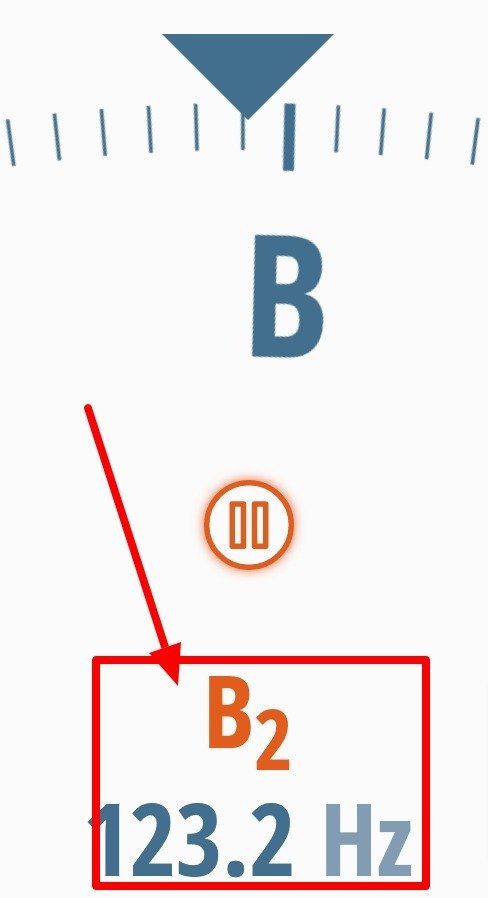
And you want to do this for every single note in the song.
It takes a lot of work, but learning how to develop your pitch-ear accuracy is essential for any singer.
Now the second way to learn how to sing on pitch if your ear is trained: Listen to the song at 0.25 on Youtube and copy how he sounds.

You can change the playback speed on any video on the bottom (the gear icon) and switch the speed.
The reason we want to sing it slowly is because it makes it easier to find the pitch before we move onto the next note.
It’s like learning the piano.
It’s easier to play the right notes when you are playing slowly, and then once we get used to it and it becomes a part of our muscle memory, then we play faster.
And you use the same process with your voice.
Start slowly to find the pitch and then slowly speed up once you do a couple repetitions and you are getting used to it.
One thing to keep in mind when you are trying to sing lower notes, try to not lower your larynx.
Although it will make you hit lower notes, I don’t recommend it because:
- It’s going to change your tone so you sound like Yogi the Bear
- You are putting some strain on your larynx.
And ideally there should be minimum strain when you are hitting your lower notes.
Now, your larynx might drop slightly (which is natural…) but you shouldn’t push it down when you are trying to hit your lowest notes.
______
4. Increase The Power In Your Lower Range

When you are learning how to sing in your lower range, you want to project your voice.
Here’s a singing exercise to help increase the power in your lowest range:
- Find your lowest range (Ex. G2)
- Now go slightly above your lowest range (Ex. A2)
- Sing A2 on pitch as steady as you can comfortably…
- Then while staying on pitch, try adding power from your diaphragm.
This singing exercise helps you with two things: strengthening your lower range and giving you more control of your voice.
It’s already hard enough to stay on the same pitch, but when you are constantly changing the volume on the same note with the same breath…
It gets a little challenging.
And the important part about your vocal range is that strengthening near your lowest range indirectly strengthens your lowest range.
So with our above example, learning to sing A2 with more power will help us be able to sing G2 with more control and power.
Pretty neat, huh?
______
5. Practice Vocal Runs In Your Lower Range
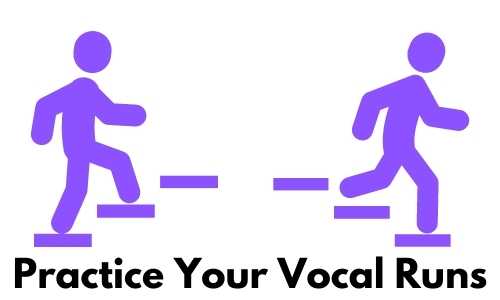
The next step to gain more control is to practice vocal runs in your lower range.
Vocal runs at its essence is switching notes quickly and accurately.
So even if you can’t do vocal runs like Mariah Carey or Ariana Grande yet, you will still benefit practicing your vocal agility.
So here’s how to practice vocal runs in your lower range: Pick three notes that’s close to your lowest range.
I’m going to pick some easy notes in the key of Major C and they are going to be C3, B2, and A2 below…
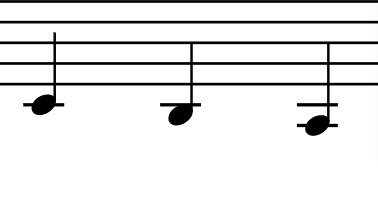
Now what you want to do is you want to hit all of these notes accurately at a slow speed.
And the way we are going to do that is with the free Google metronome and setting it at 40 BPM below…
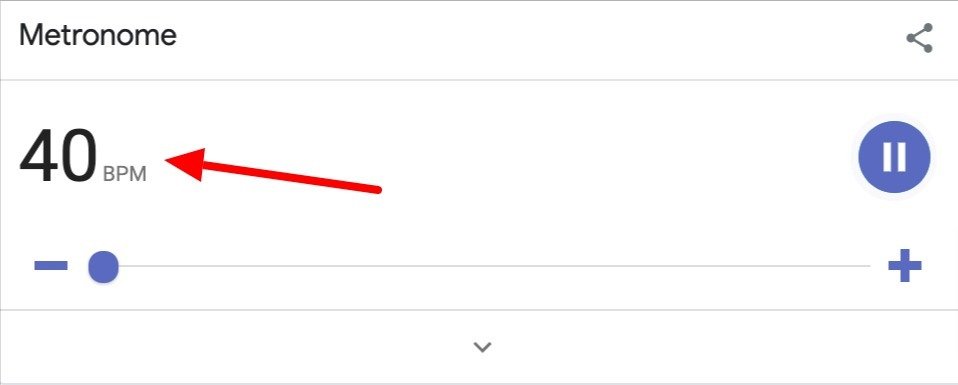
And the goal is to hit each note accurately the moment the metronome ticks.
Once you can do that, slowly speed it up by 3-5 BPM and continue to do it until the note switches become too fast for you.
Working on your vocal agility helps strengthen the control in your lower range to hit the notes accurately and quickly.
______
6. Practice Vibrato In Your Lower Range

Now it’s time to learn how to sing lower with vibrato.
If you’re a beginner singer who was obsessed with a higher range and more power (just like me…) then that means your vibrato in your lower range is probably weak.
Learning vibrato in your lower range is going to feel you’re starting all over again if you can already do vibrato in your higher range.
If you can’t do vibrato yet, you can slowly work it with your diaphragm and develop it.
So here’s how you develop vibrato in your lower range: Find a low note to stay on pitch and slowly add vibrato to it.
So for this example, we are going to use the same notes but mainly middle C (C3) below…

Now we set our Google metronome again to 40 BPM.
Now, while you are staying on pitch for Middle C, try to add 4 bounces between each tick of the metronome.
If that’s too fast for you, try to add a bounce per tick of the metronome.
And slowly start increasing the BPM by 3-5 once you start to get the hang of it (the same method as runs…)
Make sure when you are creating the vibrato sound that you aren’t shaking your head, but it’s coming mainly from your diaphragm area.
______
7. Practice Right When You Wake Up In The Morning

The best way to practice singing lower is right when you wake up in the morning.
You probably noticed that when you wake up, you already speak in a deeper voice and as the day goes on you become unable to hit those low notes as your vocal cords thin up.
And here’s the reasoning for practicing in the morning: when you can hit those really deep notes in the morning, you are getting high-quality repetitions of hitting those notes.
So after weeks and months of practicing and you can hit one note lower in the morning, what ends up happening is that you stretched your vocal cords so that when you lose some notes as the day goes on, your entire vocal range has stretched by one note.
It’s through consistently practicing where you get control of your lower voice.
______
Frequently Asked Questions
I can’t sing lower notes anymore. What happened?
There can be a lot of reasons why you can’t sing lower notes.
Some causes are:
- Puberty
- Haven’t trained in a while…
- You have a sore throat…
And a bunch of other reasons.
If it’s from an illness, I highly recommend you go to see a doctor to get your throat checked.
Why does it hurt to sing low?
It shouldn’t hurt to sing low.
That means you are probably pushing from your throat and straining by dropping your larynx too far down when you try to sing those low notes.
Make sure that you breathe with proper posture and push from your diaphragm area.
Ideally, you should be able to sing those low notes with minimum strain and should feel pretty natural.
How do you sing the lowest note in your voice?
The way to sing the lowest note that’s within your genetics is to constantly practice singing in your lower range!
It’s simple in theory, but hard to execute consistently every single day.
As long as you are systematically following the guide and working on your range with a purpose for each session, you will be able to stretch your vocal cords and sing the lowest note you can one day.
______
Conclusion
Hopefully, you learned how to sing lower bass notes effectively and safely in this guide.
We went over some tips and tricks in learning how to sing on pitch and increase the vocal dynamics within your voice.
I also shared some singing exercises you can do to practice the more advanced techniques like vocal runs and vibrato to gain more control in your voice.
And as you get more advanced, you can start learning how to sing in your lower falsetto and start adding emotion to your songs.
Let me know in the comments below which tip you found most helpful!







